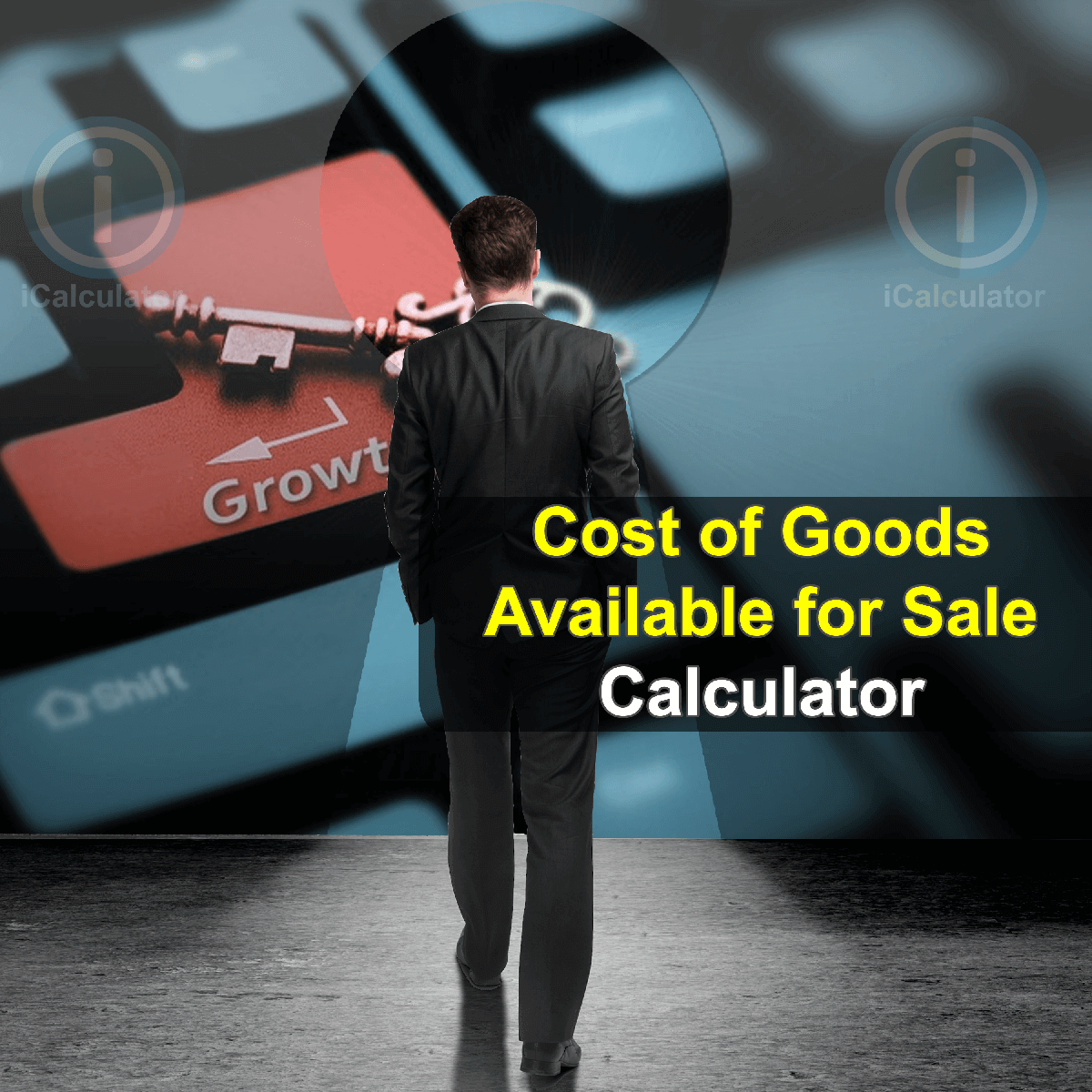Menu
Cost of Goods Available For Sale Calculator
The Cost of Goods Available For Sale Calculator allows you to calculate the total recorded cost of beginning finished goods/merchandise inventory in a defined accounting period.
| Beginning Inventory | |
| Cost of Goods Purchased |
Please provide a rating, it takes seconds and helps us to keep this resource free for all to use
Use the Cost of Goods Available for Sale to Determine the Value of Potential Saleable Products

Beginning a new accounting period is an important time for any business to keep the future operations smooth. The process involves beginning and ending inventory, calculating the profits, revenue and expenses, etc.
The cost of goods available can be defined as the price paid for the inventory that is readily available for customers to purchase. Put simply, it is the total cost of the produced goods that are saleable at the beginning of a new accounting period.
Let's take a look at the other factors that have an impact on the cost of goods available for sale calculation.
Calculations that affect the cost of goods available for sale
You can calculate beginning inventory by using the following formula:
- b - Beginning inventory: It is an asset account, classified as a current asset. Even though technically, you don't see the beginning inventory on the balance sheet, it exists in the form of ending inventory that appears at the beginning of a balance sheet.
- COGS - Cost of Goods Sold: This is the total production cost for each unit that a company spends on producing the goods. The companies seek the highest possible price and the lowest cost of goods sold to gain the greatest profits possible. You can obtain COGS using the COGS formula or by using the COGS - Cost of Goods Sold Calculator
- e - Ending Inventory: You may calculate the ending inventory add the beginning inventory value to the new purchases and then subtract the cost of goods. This will give you the value of goods available for sale at the end of an accounting period.
Consider these factors before performing the calculations
- The cost of inventory: The cost of goods purchased, especially in retail business will add to the cost of goods available for sale. However, you should make sure that you add any other costs relating to the goods, such as transportation or duties paid to the cost. Also, any discounts or credits (if applicable) should be subtracted from the cost.
- Perishable goods: The beginning inventory reflects as the ending inventory in the book for a new accounting period. You should enter the total value and quantity of units that was the ending inventory with the exception of perishable goods. This is because, if you are dealing in perishable goods, you will most likely dispose of the goods at the end of the day, hence they should not be transferred as the beginning inventory.
- Cost of Manufacturing: If you are calculating the cost of goods available for sale for a manufacturing firm, another factor that you should consider is to only consider the cost of the finished goods when calculating the cost of goods available for sale. The cost involved in manufacturing the goods, such as raw materials, should not be included in the calculation.
Damaged and outdated inventory: The value of damaged and outdated inventory can make the cost of goods available for sale look much higher than it is in reality. These are the products that are not sold for a long time, destroyed, damaged or stale (for perishable goods) and have become unfit for sale.
You should make sure that you do not add them to the calculation of the cost of goods available for sale. If it is not possible for you to manually count the number of goods, this can be done by estimating the percentage of damaged and outdated goods in order to get more accurate results.
After going through the above factors it may seem a bit complex to perform these calculations manually, but the calculator can make things easier for your, let's take a look at how to use the calculator.
How to use the calculator to determine the cost of goods available for sale
The cost of goods available calculator has been designed by iCalculator in order to make your calculations simple. It is easy to use and will save a lot of your time that you might spend in manual calculations.
The following formula is used for the calculations by the calculator:
The components of this formula are explained below, these are also the entries that you will make into the calculator:
- Beginning inventory: Enter the inventory value which is the starting point in the books for a new accounting period.
- Cost of goods purchased: insert the value of purchases made, this can be any purchases added to the inventory during the preceding accounting period.
Finance Calculators
You may also find the following Finance calculators useful.
- Book Value Per Common Share Calculator
- Hourly Wage To Annual Salary Calculator
- Credit Card Debt Payoff Calculator
- Periodic Compound Interest Calculator
- Savings Calculator
- Auto Loan Emi Calculator
- Car Loan Calculator
- Car Depreciation Calculator
- Apr Simple Interest Loan Calculator
- Accrued Interest Calculator
- Average Payables Period Calculator
- Average Collection Period Calculator
- Payments Calculator
- Redundancy Calculator
- Capital Gains Tax Calculator
- Insolvency Calculator
- Effective Annual Rate Calculator
- Simple Annuity Calculator
- Roi Calculator
- Retirement Ira Calculator